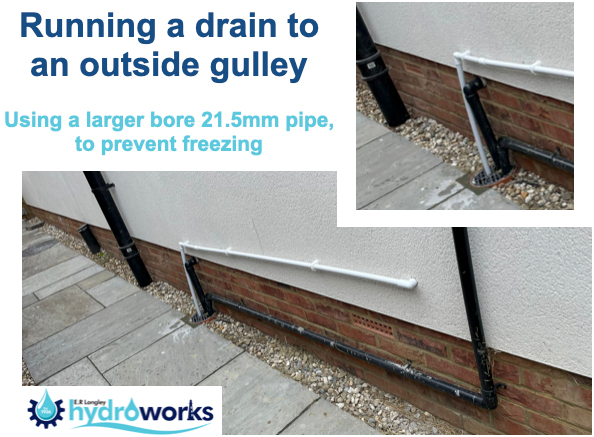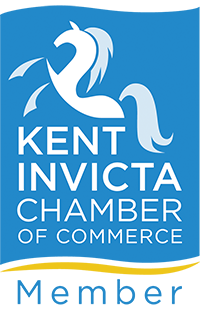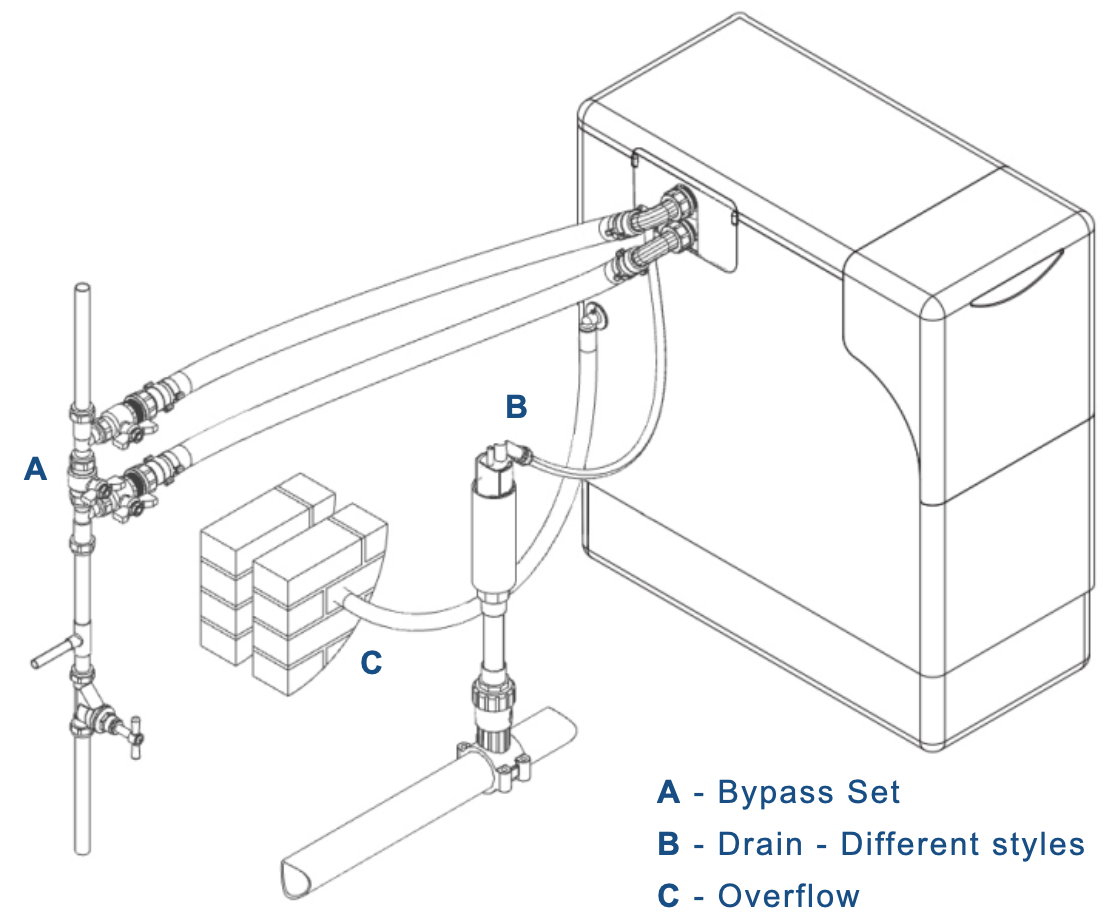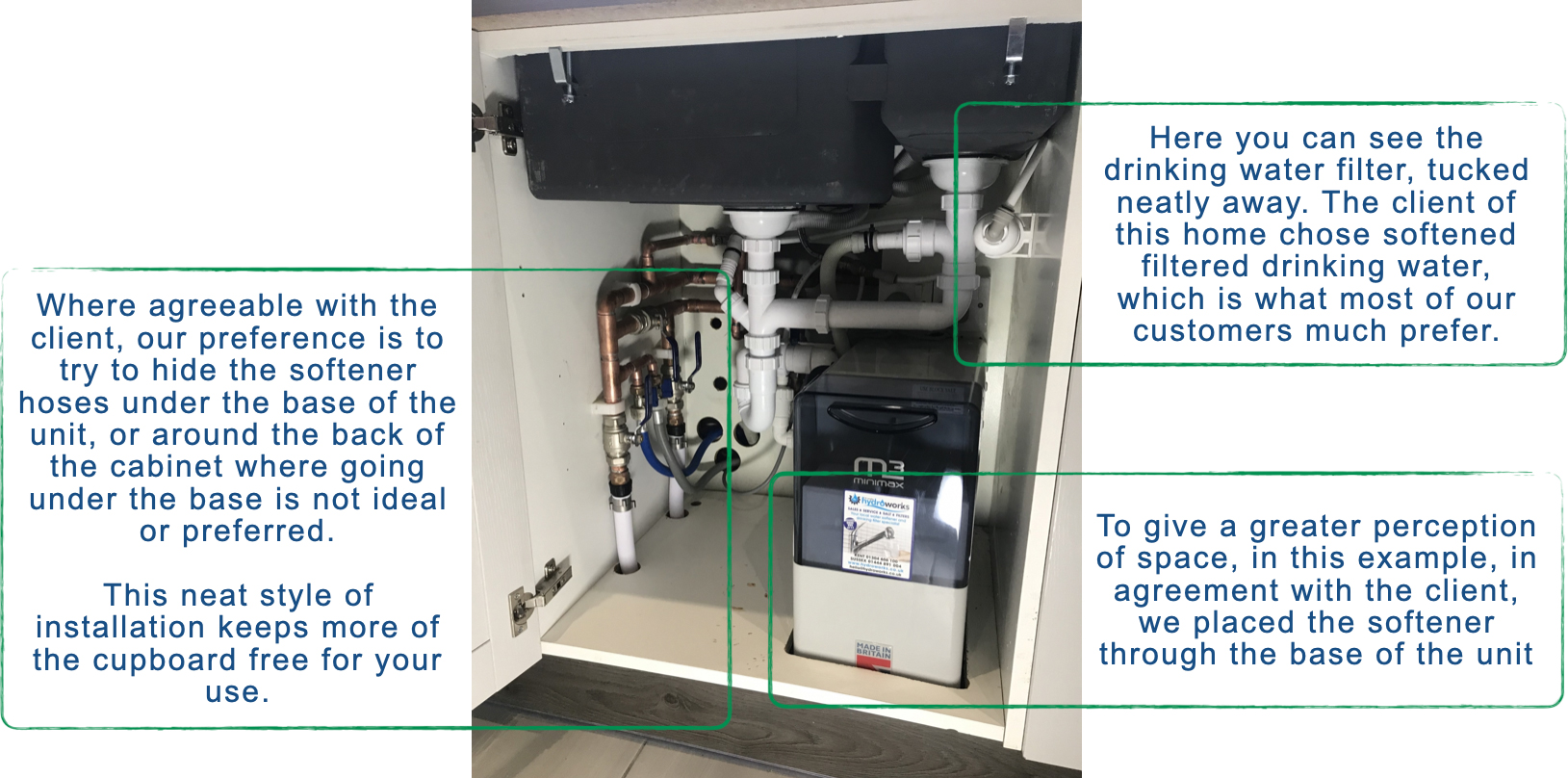Water Softener Installations
'Proper' Installations: EVERY TIME
With over 26 years of experience in the industry, I (Laurence) train my team to always aim for distinction in everything we do, especially our installations.
When I recruit people into our business, I take the time to mentor them both initially and throughout their careers to always look at what Excellence looks like from the customer's perspective.
Of course, no matter how hard a business tries, it won’t get everything right every single time. On the rare occasion something isn’t perfect first time, our commitment is simple: we’ll put it right. That’s part of our ethos — always aiming for the 5-star standard our customers deserve.
Our 5-star rating across all review platforms, including Google, Check-a-Trade, Trustpilot, Facebook, and previously Trading Standards Trusted Trader scheme, should hopefully give you peace of mind that we're committed to doing the very best for you and your family.
Best Advice Sales Visit - No Obligation Quotation
From your very first enquiry right through to our Best Advice Sales Visit, we’ll take the time to carefully plan your installation and give you the best guidance possible.
It’s usually me who carries out these initial visits, and with many years of experience in the water softening industry, I bring a significant amount of knowledge to share. I’m genuinely passionate about what I do, and my aim is always to help educate and guide you — with as much or as little detail as you’d like.
We'll agree on a detailed installation plan, and then I'll prepare it in a way that it can be easily shared with my installation team, so that there is complete understanding of what was agreed in our conversation.
At the end of the visit, you’ll receive a clear, no-obligation quotation, so you can decide in your own time with complete confidence.
Our Product selection is based on our 4-Litmus Tests
We believe that selecting the right water softener for your home need not be complicated, and when you understand our Litmus Tests, you will know why we make our product choices.
My industry has a history in the UK of using 'marketing' to create confusion, all in the name of selling a water softener. There is, consequently, a lot of misinformation out there, so my commitment is to clear the confusion up.
Our 4-point Litmus Test is tough for a manufacturer to pass as my expectations of quality are high. These four points are:
- A Product must be RELIABLE
- A Product must be EFFICIENT
- A Product must give CONSISTENTLY HIGH-QUALITY WATER
- The supplier must provide EXCELLENT TECHNICAL BACKUP
If you would like to read up further on the Litmus Test points we work by, you can find that here
- - - - - - - - - - - - - - - - - - - - - - - - - - - - - - -
Carefully Planned and Executed Installations
In my opinion, an excellent water softener installation requires careful planning, professional workmanship, and outstanding after-sales care.
While there are many factors we need to consider as part of that installation planning, these two are probably the most important:
FLOW RATES
When choosing a softener, it’s important to think about the impact on your home’s water flow and pressure. The last thing anyone wants is a disappointing drop in flow rate.
Here in the UK, mains water flow is often inconsistent. By law, water companies are only obliged to provide 1 bar of pressure and 9 litres per minute — and that’s not much at all!
This is where many water softeners struggle (though it’s not something people talk about nearly enough). The key is to do everything possible to maximise flow rates, so your home runs smoothly.
Gravity Fed Systems
Traditionally, UK homes have used storage tanks in the loft.
With these systems, mains pressure and flow rate weren’t such a big deal — the mains only had to fill the storage tank, plus supply the kitchen sink and outside tap.
Older homes often had lead mains or a 15mm (½”) incoming pipe, which can typically deliver around 15 litres per minute. That was fine for a tank-fed system.
The problem comes when houses with this older 15mm pipework are converted to a direct, pressure-fed system without upgrading the mains supply. In these cases, the smaller pipe simply can’t keep up with modern household demand — leading to disappointing flow rates.
Mains-Fed Systems: Unvented cylinders and Combination Boilers
Modern plumbing systems supply mains water directly to every outlet in the home. These are known as direct or pressure-fed systems, and they rely on the incoming pipework being correctly sized for the household’s demand.
For a typical 1–2 bathroom home, a 22mm (¾”) mains pipe is usually installed, delivering around 35 litres per minute.
As the number of bathrooms goes up, so does the need for larger pipework. Many homes now use a 28mm (1”) main, while in bigger properties it’s not unusual to see 35mm (1¼”) or even 42mm (1½”) mains pipes to keep everything flowing smoothly.
How Flow Rate is Measured
Flow rate — measured in litres per minute (l/min) — is the volume of water passing a given point in a set time. It’s determined by both pressure and pipe size: higher pressure and larger pipes mean a higher flow rate, while low pressure and smaller pipes restrict it.
One way we look at this in practice is through the choice of bypass sets and hoses.
Here’s an example based on a 15mm incoming mains pipe:
-
Standard bypass and hoses: typically around 23 l/min (the type most installers use as they’re cheaper - referred to as washing machine valves)
-
Full-flow bypass with 12mm hoses: typically around 26 l/min
-
Full-flow bypass with 19mm hoses: typically up to 28 l/min
Of course, the exact results will depend on what your incoming main can actually deliver. But as a rule of thumb, maximising flow is always the smarter choice — and in my view, the best choice.
- - - - - - - - - - - - - -
Pressure and Pressure Drop
Water flows from your taps thanks to water pressure. The higher the pressure, the faster the water comes out.
There are two key types of pressure to know about:
-
Static pressure – this is the pressure in the pipe when no water is flowing (all taps closed). Wherever you measure it, the reading should be consistent.
-
Dynamic pressure – this is the pressure while water is flowing. Unlike static pressure, it changes depending on where you measure along the pipe.
As water moves further through the pipework, dynamic pressure naturally falls because of frictional resistance. This loss of pressure between two points is called a pressure drop.
Several things can cause this resistance:
-
Partially closed valves (these can cause the biggest pressure drops)
-
Pipe fittings such as elbows and tees, pipework
-
Water softeners design
-
Even the length of the pipe, as water rubs against the inner walls
All of this friction adds up, reducing pressure as water travels through your system.
- - - - - - - - - - - - - -
Other Factors we consider:
As you're now about to see, there are, however, other factors that should also be considered:
The type of hot water system you have
The reason this is important is that a lot of softeners struggle to measure lower flow rates. With that problem, we then have to seriously consider trickle flow and chanelling - you can read more about that on this page on our website.
The type of drain that might be needed
When we design your installation, the layout will usually look something like the diagram below.
For the drain, there are a few options:
-
It can run internally with a stand-up air gap (as shown in the line diagram).
-
We often prefer to run it externally, as shown in the photograph.
-
Or, we can fit a neat plumbing-out kit internally.
Why does this matter?
Because the stand-up air gap can sometimes be a little noisy.
Wherever possible, we’ll choose the option that keeps things quieter — so your softener serves your home peacefully in the background, just as it should.

The space available & how you use it
Every home is different, and every family uses their space in their own way. When I first visit, one of the things I always look at is how much room you have available — sometimes it’s generous, sometimes it’s tight.
It’s not just about where the softener will fit, but also about how you’ll still be able to use the space around it once it’s installed. That’s why, wherever possible, we’ll plan the installation to maximise your available space and keep things practical for everyday life.
What about the garden tap?
Traditionally, garden taps are left on hard water. But in recent years, more and more of our customers have chosen to enjoy the benefits of softened water outside too. In fact, in 2022 over 30% of our installations included softened water to the garden — and with good reason.
Plants thrive on softened water, and unless you’re running a sprinkler all summer long, it won’t make much difference to your annual salt use. Your garden will thank you for it. 🌱
As a rule of thumb, if you water an average garden with softened water using a handheld spray, like Joan does in the video below, you will use approximately £3 extra in terms of salt cost more per month in the summer month (based on Minimax block salt softener)
Of course, if you’d prefer to keep your garden tap on hard water, we’ll always aim to do that. And if it’s not possible in your property, we’ll suggest practical alternatives so you still have the choice.
Why the Right Materials Matter
I’m a stickler for doing things properly — and that’s why, at Hydroworks, we only use WRAS-approved fittings and British copper.
We never cut corners with cheaper materials.
For example:
-
Chinese copper is widely used in the trade because it’s cheaper, but it doesn’t last as long, wears poorly, and can even react with softened water — leaving unsightly green stains on your sanitaryware. Ouch!
-
Metal-braided hoses are another common shortcut. They cost less up front, but the inner linings can crack within a few years, and if a bit of the actual outer metal braiding should pierce the inner lining, that's a catastrophe waiting to happen. In my view, they are just not good enough for your home.
- Quality Installation bypass sets - that don't stick, and are always easy to turn.
Why You Can Trust Us
At Hydroworks, you’re never just a number — you’re part of our story.
We’re proud to be a family-owned business with a heritage stretching back to 1926, making us the longest-established water softener dealership in the world, and the second oldest consecutively trading anywhere. That history is more than a fact; it’s a promise. From Jeremy’s grandparents, who founded the business nearly a century ago, through to today, we’ve carried forward their commitment to doing things properly and looking after people the right way.
For us, water softening isn’t just business — it’s a way of life. With decades of technical expertise, we understand the importance of longevity in every decision, and we’ll always give you honest advice that serves you well both now and for years to come.
When we install your water softener, we combine modern WRAS-approved best practice with a few extra touches of our own. For example, we’ll always shut off your external mains (where accessible) as well as your internal stopcock before starting work, because protecting your home from water damage matters as much to us as it does to you.
So, whether you step into our store, meet us in your home, or explore our website, you’ll find the same thing: genuine care, traditional standards of service, and a team you can rely on. That’s the Hydroworks difference.









